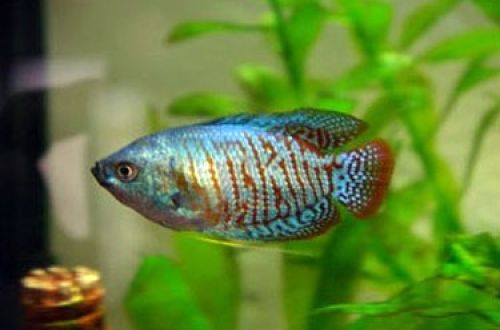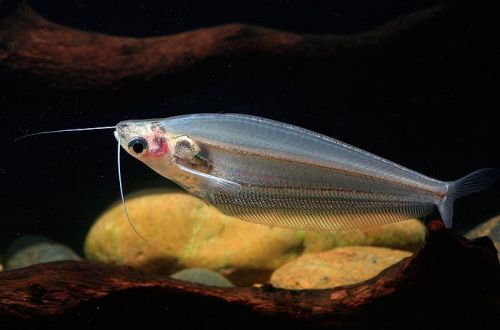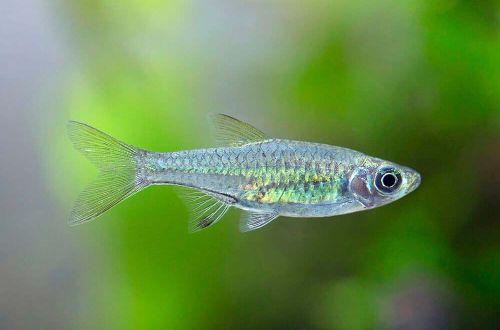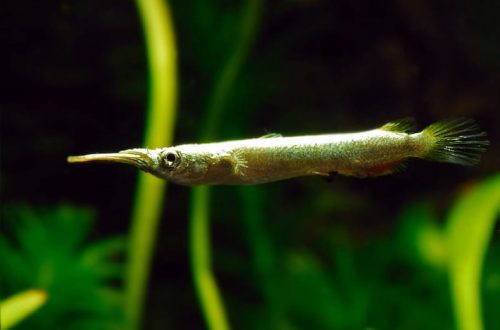
Neon Gourami
The neon gourami, scientific name Trichogaster lalius, belongs to the Osphronemidae family. Widely available and the most famous variety of Lalius, it has more saturated colors. This species was bred artificially, by crossing individual specimens of fish and fixing the desired characteristics over many generations. It turned out to be a stable species, the offspring from two parents necessarily inherit their traits.

Contents
Habitat
The species is bred artificially, therefore it is not found in its natural habitat.
Description
The neon gourami has a somewhat oval-shaped, laterally compressed body. The fins are relatively large with rounded edges. The ventral fins are thread-like processes with sensory cells, with the help of which the fish gets acquainted with the outside world. The body color is characterized by a combination of bright contrasting vertical stripes of blue and dark red, so it is difficult to distinguish the dominant color.
Food
In a home aquarium, they are happy to accept all types of dry industrial food (flakes, granules, tablets), there are special foods for Gourami that take into account all the needs of fish for vitamins and microelements. Feed once or twice a day, depending on the diet, for example, if meat products are present, then feed once.
Maintenance and care
The fish are modest in size, so they are not demanding on the size of the tank. A pair of fish can be content with 50 liters. For larger quantities, you should purchase a comparable aquarium at the rate of 25 liters per 1 individual. The mandatory set of equipment is as follows: filter, aerator, heater, lighting system. Choose a filter so that it combines performance, but at the same time creates a weak flow of water. For Gourami, a strong current is not acceptable; he prefers stagnant or slightly flowing waters.
In the design, provide shelters in the form of snags, grottoes – this is a necessary condition when keeping more than three fish. Dense thickets of plants along the side and back walls will create a favorable environment, provide a sense of security for these small fish. Floating plants are welcome, but their number should not impede access to the surface. The dark substrate contrasts beautifully with the color of the fish, there are no requirements for the size of the soil particles.
Social behavior
Peaceful and even shy species, feels great in a species aquarium or with representatives of other peaceful and calm species of small size. As neighbors, you can use cyprinids (Debriefing, Neons), catfish. Avoid neighborhood with live-bearing species, active fish such as Barbs, Bettas, etc.
Intraspecific relationships are not simple, males compete with each other for the attention of females, organizing real fights. In a small aquarium, a weak individual will be in constant danger, so the optimal ratio is a male / female pair, or a harem of one male and several females.
Sexual differences
The male is more colorful, the females look faded in comparison. Differences also exist in the shape of the fins, in females the dorsal fin is rounded, in males pointed
Breeding / breeding
Breeding is quite simple, but during spawning, the behavior of males can be unpredictable. When the nest is being built, the male drives everyone away from it, even the females, in which case the plants are important for retreat and shelter.
The incentive for spawning is the inclusion of meat products in the daily diet. At a certain moment, the male starts building a nest of bubbles on the surface of the water, the female gradually fills with caviar, from which it noticeably inflates. At the end of construction, the courtship period begins, the male forms a pair with the female, if there are other females in the aquarium, he will chase them.
The female releases the eggs into the water, the male fertilizes them, then picks them up with his mouth and transfers them to the nest. When spawning ends, the female leaves her partner, the male remains to protect the offspring, the fry appear after about 12–36 hours, they begin to swim freely in the aquarium on the third day.
The fry should be isolated from their parents, since they can be eaten if spawning took place in the main aquarium, they are caught and transplanted into a separate tank, where similar living conditions are created.
Fish diseases
Hardy and not whimsical, in an aquarium with a balanced biological system, problems with diseases are not observed. The deterioration of living conditions inevitably leads to health problems. Read more about symptoms and treatments in the Aquarium Fish Diseases section.





